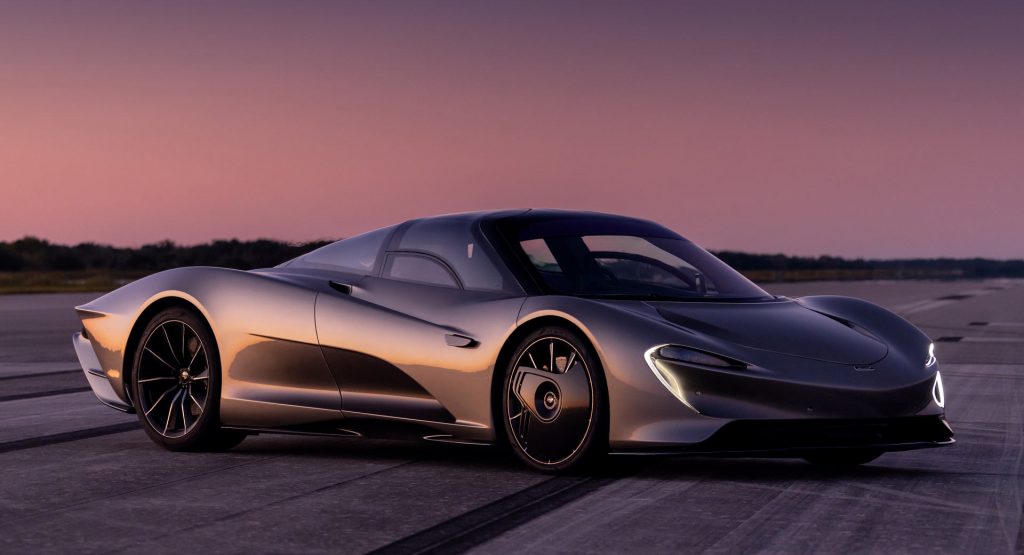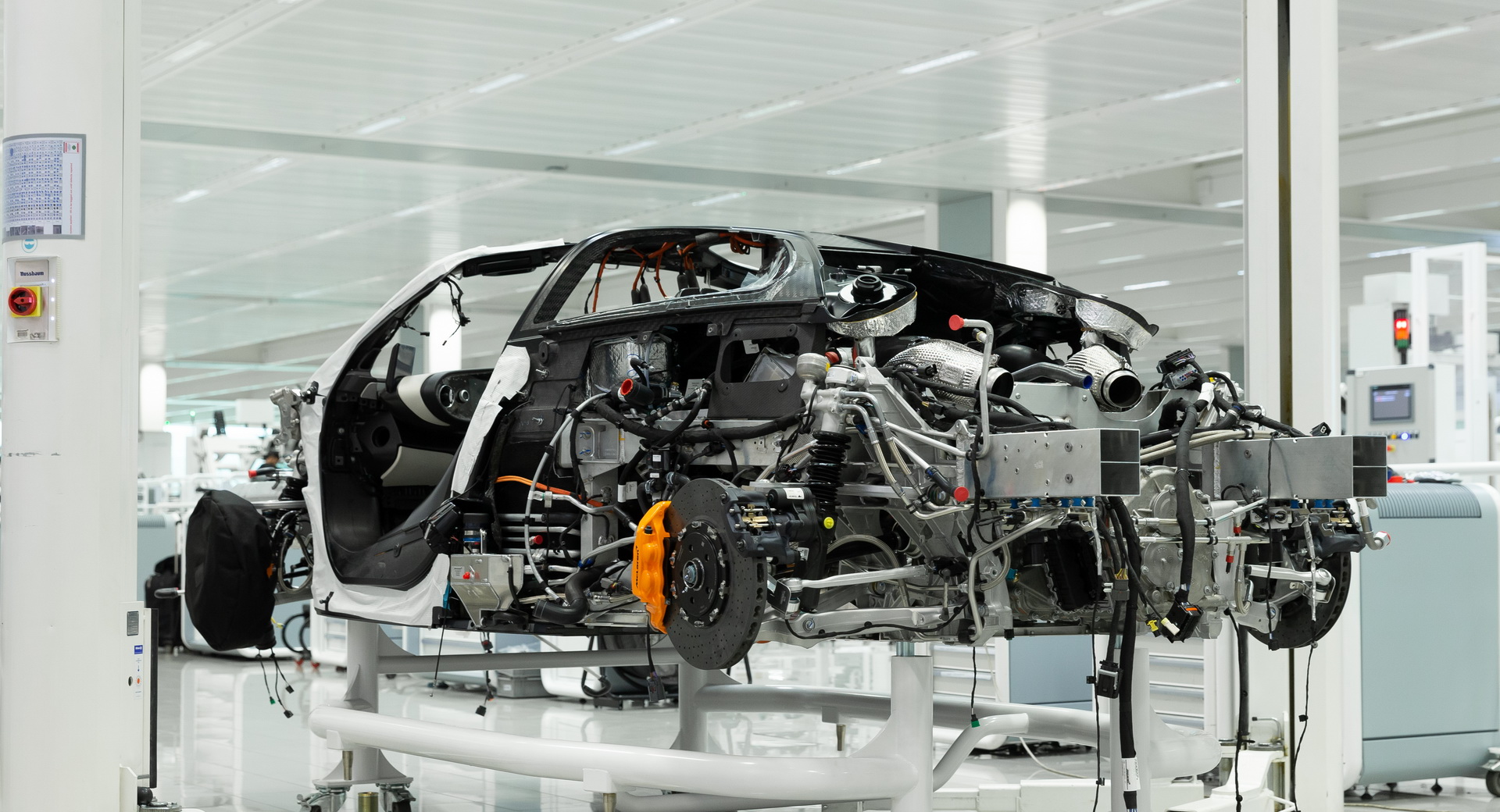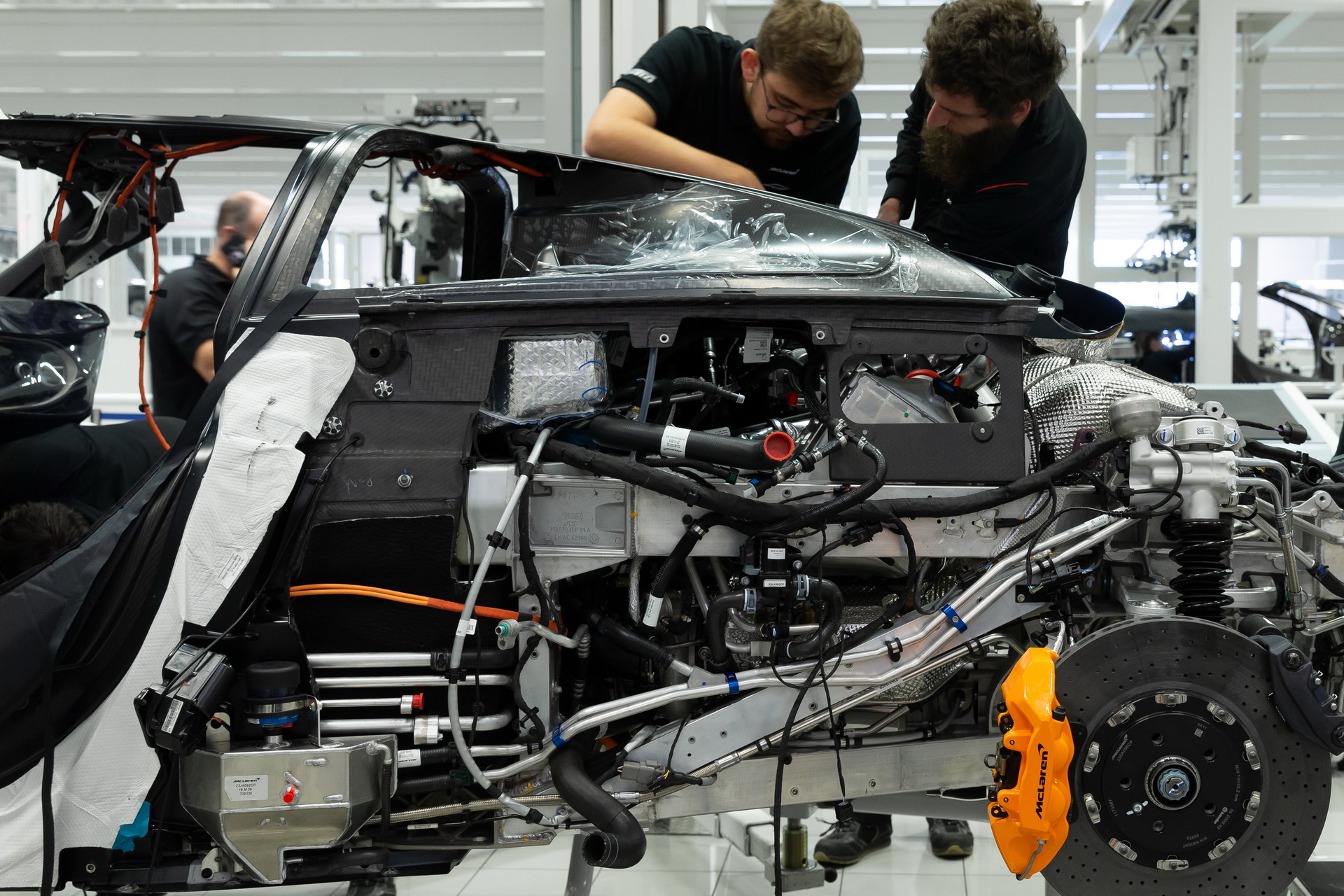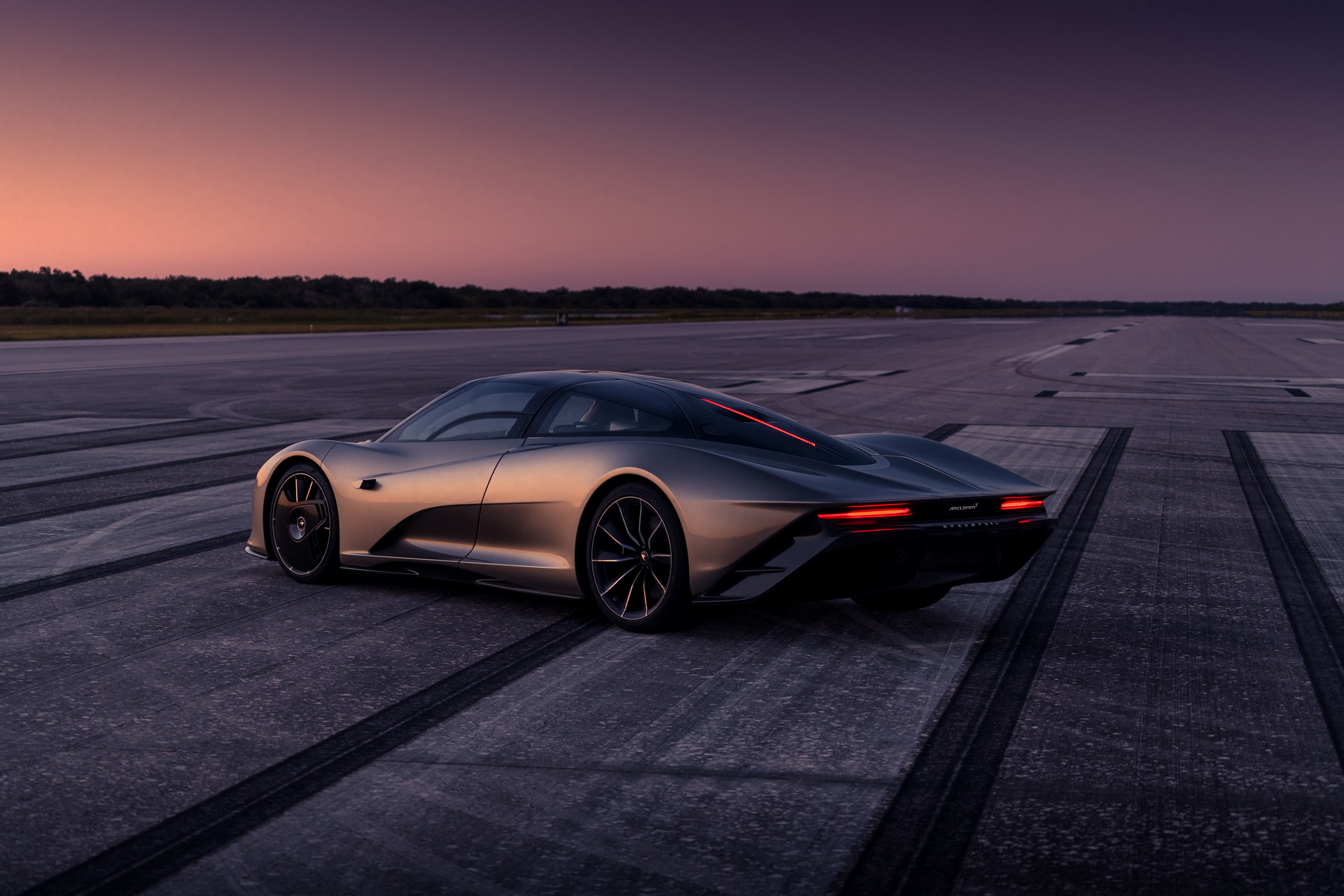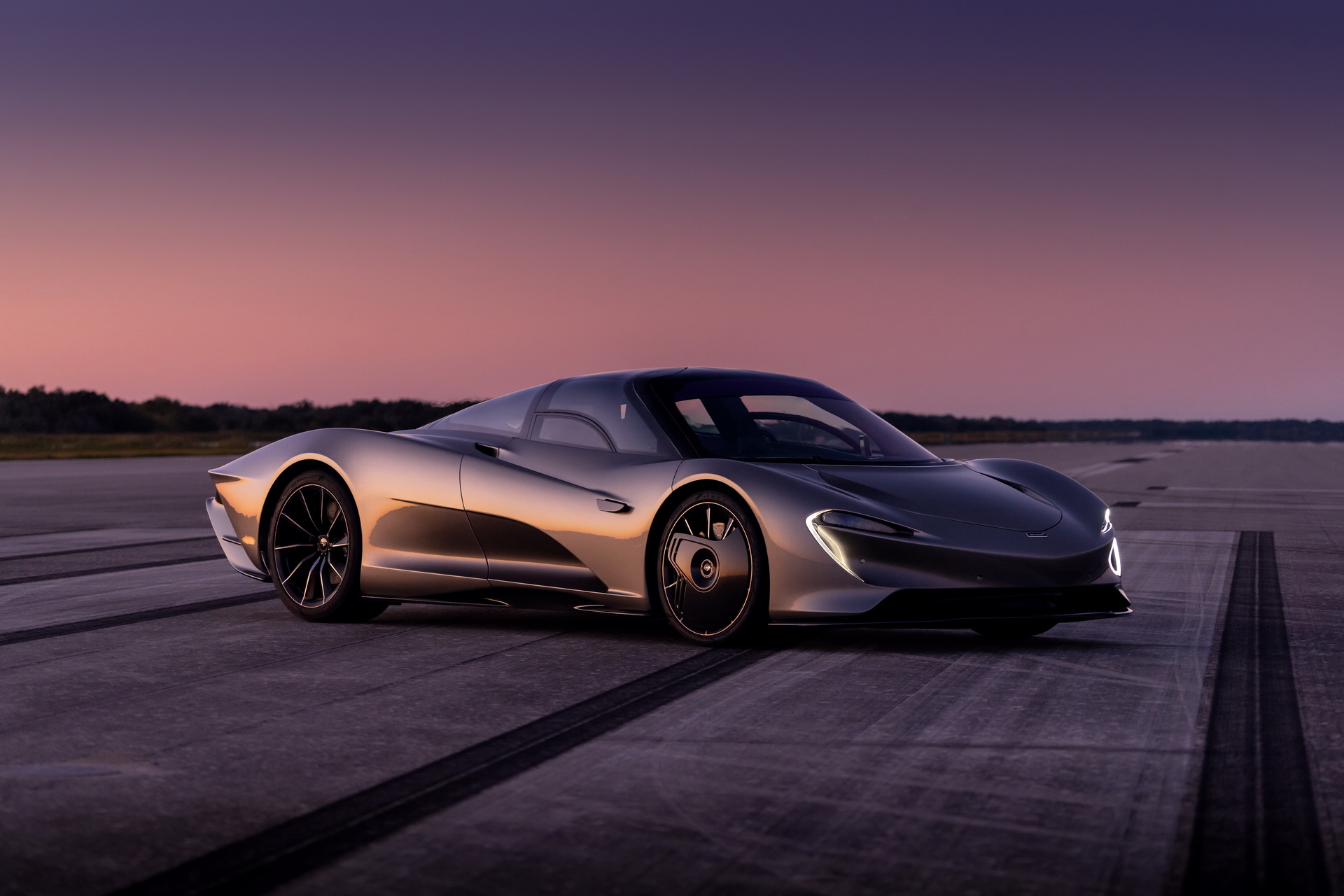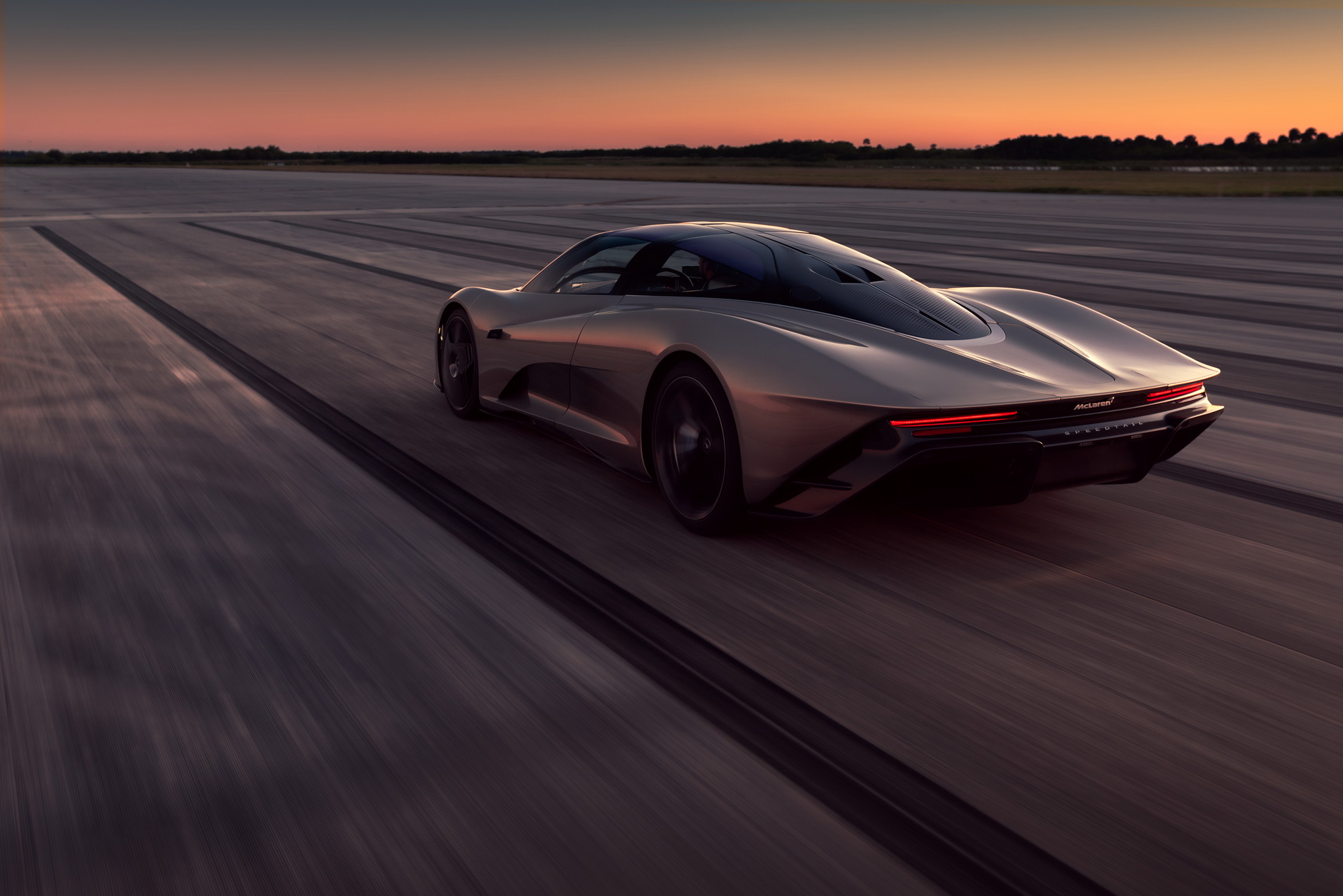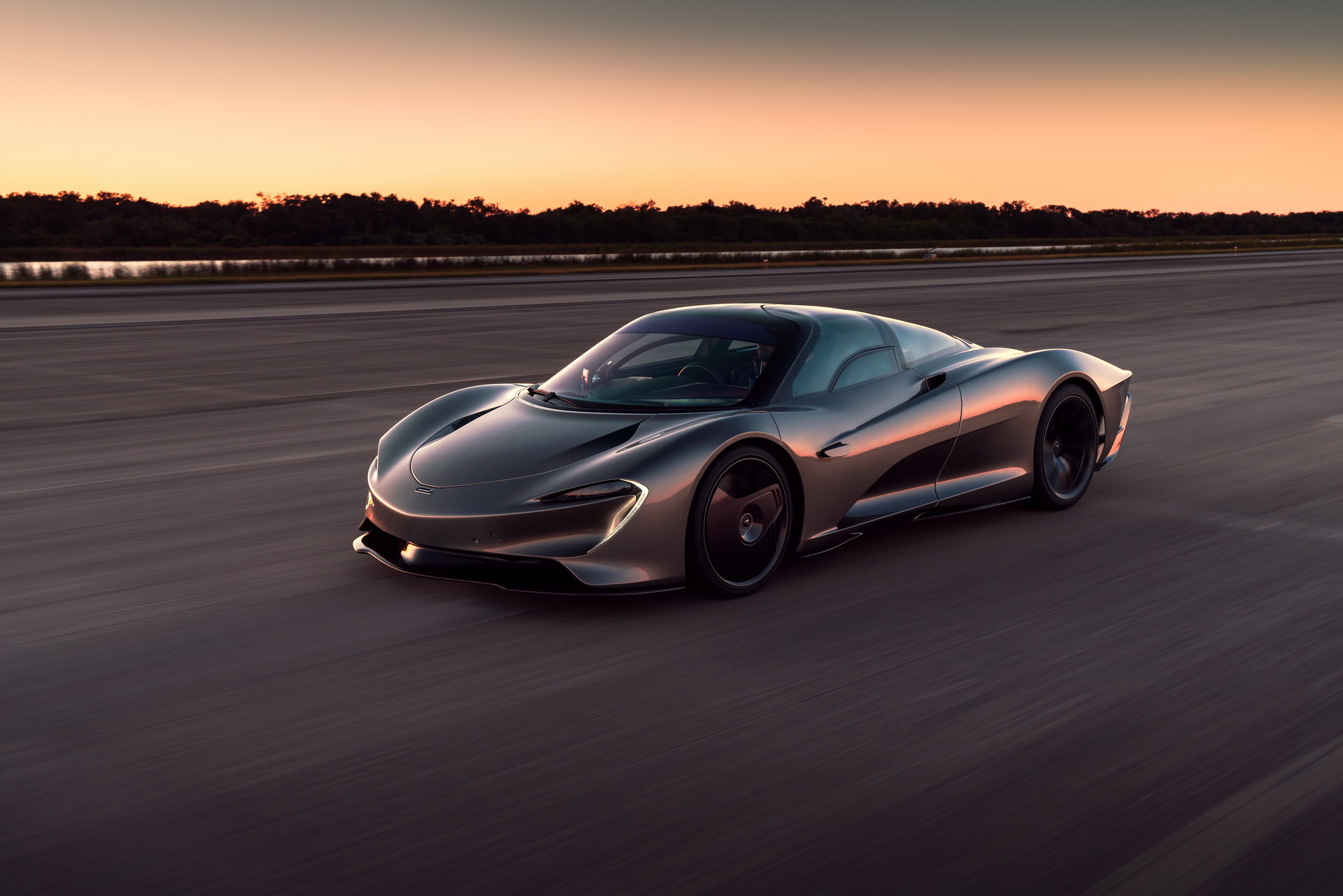In order for the Speedtail to reach its maximum speed of 250 mph (403 km/h), McLaren engineers used a combination of aerodynamics, low weight and a race-bred electric drive system that stands out due to its hybridized efficiency.
Put it all together, and you don’t just max out at 250, but you’ll also rocket to 186 mph (300 km/h) in just 13 seconds, which is Hennessey Venom GT levels of quick.
Powering the Speedtail is a 4.0-liter internal combustion engine, working alongside an electric drive unit for a combined 1,070 PS (1,055 HP) and 1,150 Nm (848 lb-ft) of torque, of which 757 PS (746 HP) and 800 Nm (590 lb-ft) are provided by the V8 engine.
Watch: Top Gear Races A Fighter Jet With A McLaren Speedtail
The electric motor meanwhile uses Formula E-derived technology, generating more than 308 HP (230 kW), giving the Speedtail the highest performance installation (including cooling and integration) of any electric motor currently in use on a production road car. Power delivery alone is 8.3 kW/kg, twice the efficiency of an average sports car.
“Engineers from McLaren Applied ‒ the McLaren Group division that focuses on virtual product development, telemetry, electrification and control ‒ worked with the Speedtail Electric Drive Technology team to integrate its ground-breaking motorsport-developed inverter and DC/DC converter technology into the electric drive system, ensuring the levels of control and power management required for the hybrid Hyper-GT to realise its extraordinary performance.”
One innovative piece of kit is the 1.647 kWh high voltage energy storage system. It consists of a high power cylindrical cell arranged in a unique array, delivering the best power-to-weight ratio of any high voltage battery available today.
The power density of this battery is said to be four times greater than the one in the McLaren P1, providing 5.2 kW/kg and an output of 270 kW.



